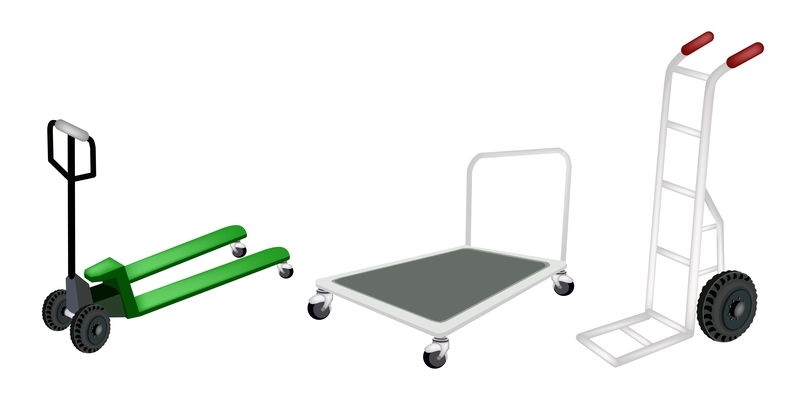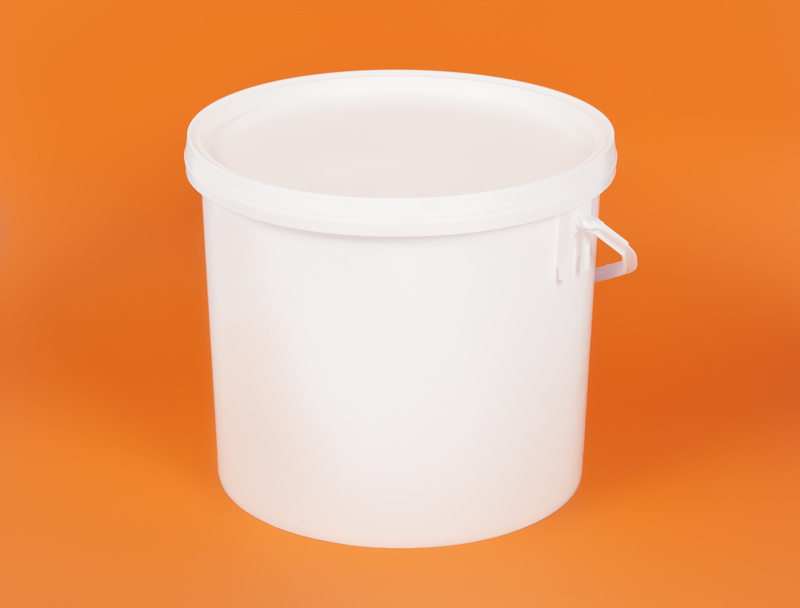Proven Methods to Pack Effectively When Moving House
Posted on 29/05/2025
Proven Methods to Pack Effectively When Moving House
Moving to a new house can be both exciting and challenging. One of the most crucial aspects of a successful move is packing efficiently. Efficient packing not only saves time and energy but also helps prevent damage to your belongings. In this ultimate guide, we'll explore proven methods to pack effectively when moving house, ensuring your relocation is as smooth as possible.

Why Effective Packing Strategies Matter
Using the right packing strategies plays a vital role in streamlining your entire moving process. Here's why:
- Reduces stress: A systematic approach to packing minimizes last-minute scrambling.
- Prevents damage: Properly packed items are less likely to break or get lost.
- Saves money: Efficient packing can reduce the number of boxes (and movers) required.
- Speeds up unpacking: Clearly labeled and organized boxes make it easier to settle into your new home.
Start With a Packing Plan
Before you start packing, developing a plan is essential. A well-thought-out plan helps keep the process organized and your stress levels low.
- Set a timeline for packing each room.
- Create a moving checklist that covers key packing milestones.
- Allocate time for decluttering and organizing before you even touch a box.
- Assign tasks to family members or housemates to delegate work efficiently.
Declutter Before You Pack
One of the most effective ways to simplify your move is to get rid of items you no longer need. Decluttering saves time, space, and money.
- Sort your belongings: Go room by room and create piles for items to keep, donate, recycle, or throw away.
- Hold a garage sale: Sell unwanted items to lighten your load and earn some extra cash.
- Donate usable goods: Local charities are often thrilled to accept gently used household items.
- Dispose of hazardous materials: Items like paint, batteries, and cleaning products should be discarded safely according to municipal guidelines.
Gather the Right Packing Supplies
Using proper packing materials is key to protecting your possessions and making the move efficient. Here are the essential supplies you'll need:
- Durable moving boxes: Use various sizes for different items (books, kitchenware, clothes, etc.).
- Packing tape: Heavy-duty tape keeps boxes securely closed.
- Bubble wrap & packing paper: Protect fragile items from bumps and drops.
- Markers and labels: Label each box with its contents and destination room.
- Plastic bags: Use for small parts, screws, or cords - tape them to disassembled furniture and electronics.
- Furniture covers and blankets: Shield large items from dust, dirt, and scratches.
- Scissors and box cutters: Essential for cutting materials as you pack and unpack.
Packing Efficiently: Room-by-Room Tips
Organizing your packing process by room can help you work systematically and avoid overlooking items. Here's a breakdown of how to pack each major area efficiently:
Kitchen Packing Tips
- Purging expired food: Use up or donate non-perishables; dispose of anything past expiration.
- Pack dishes vertically: Dishes are less likely to break if they're packed standing up rather than stacked.
- Wrap fragile items individually: Use packing paper, bubble wrap, or even dish towels.
- Bundle cutlery: Use rubber bands or wrap entire sets in kitchen towels.
- Label boxes "Fragile": Clearly mark breakable or sensitive kitchenware.
Packing Bedrooms
- Use wardrobe boxes: Hang clothes directly on the rail for wrinkle-free transportation.
- Pack out-of-season clothes: Place in plastic bins for storage until needed at your new home.
- Use suitcases for heavy items: Books and shoes are easier to transport this way.
- Keep linens and pillows in large garbage bags: They make excellent padding for fragile items in boxes.
- Pack personal valuables separately: Jewelry, important documents, and sentimental items should travel with you.
Living Room & Electronics
- Take photos: Snap pictures of electronics setups (wires, connections) for easy reassembly.
- Use original boxes: If available, pack electronics in their original packaging for best protection.
- Bundle wires: Use zip ties, label each bundle, and store them in a bag attached to the item.
- Protect artwork and decor: Wrap fragile items in bubble wrap and use corner protectors for picture frames.
Bathroom Items
- Consolidate liquids: Transport only essential toiletries; tape lids or store in resealable bags to avoid leaks.
- Use small boxes: Avoid overpacking toiletries, medicines, or cosmetics in large boxes.
- Pack daily essentials separately: Prepare an essentials kit with items needed for the first night.
Expert Packing Hacks to Save Time and Space
Want to take your house moving packing efficiency to the next level? Try these expert hacks:
- Color code each box or room: Use colored tape or labels so movers know exactly where each box belongs at a glance.
- Use suitcase space: Fill rolling luggage with heavy books or out-of-season clothes for easy transport.
- Wrap clothing drawers: Instead of emptying drawers, wrap them in plastic wrap to save boxing time.
- Fill empty spaces: Use towels, pillows, or sheets to cushion gaps and protect fragile items.
- Pack plates and glasses upright: Upright positioning with ample padding reduces breakage during transport.
- Keep hardware in bags: For disassembled furniture, store screws, bolts, and small parts in labeled bags taped to the item.
Packing Timelines: When to Pack What
Understanding when to pack different items is an effective strategy for stress-free moving. Here's an ideal timeline:
4-6 Weeks Before Moving Day
- Sort and declutter, donate or sell unwanted items.
- Pack rarely used and off-season items (holiday decor, extra linens, guest room contents).
- Start packing books, DVDs, and keepsakes.
2-3 Weeks Before Moving
- Pack infrequently used kitchenware and dishes.
- Box up decorative items, artwork, and out-of-season clothes.
- Disassemble and pack furniture that's not essential.
1 Week Before
- Pack most remaining items, room by room.
- Clean each room as you finish packing it.
- Set aside essentials for the last week.
Moving Day Essentials
- Packing an "open first" box with essentials (toiletries, a change of clothes, basic kitchenware, chargers, etc.).
- Keep valuable documents, medications, and valuables with you.
Labeling: The Secret to Organized Unpacking
Proper box labeling is one of the best methods for effective packing when relocating. Follow these labeling tips to make unpacking a breeze:
- Use large, clear labels: Mark each box on several sides with its destination room and a summary of contents.
- Use a numbering system: Number each box and keep a master inventory list for easy tracking.
- Mark fragile items: Add "FRAGILE" and "This Side Up" to all sides of boxes with breakables.
- Add special instructions: Note if a box needs to be opened first or contains cleaning supplies, tools, or hardware.
Digital Inventory Tools
Consider using apps or spreadsheets to track what's in each box. This modern method of keeping an inventory can save hours when settling into your new home and is especially useful for large moves.
Packing Do's and Don'ts
- Do use sturdy, reinforced boxes for heavy or valuable items.
- Do seal liquid containers with tape and store them in plastic bags.
- Do keep sets together (ex: bedsheets and pillowcases, remote controls with electronics).
- Don't overfill boxes - they can break or become too heavy to move safely.
- Don't leave empty spaces in boxes - fill gaps with paper or soft items to avoid shifting.
- Don't pack hazardous materials; these should be disposed of properly prior to moving.
- Don't pack perishable food unless you're moving a short distance.
Protecting Valuable and Fragile Items
When it comes to packing high-value items like artwork, antiques, or heirlooms, special care is needed:
- Double-box fragile items: Place a smaller, padded box inside a larger box for extra protection.
- Use specialized packing materials: Foam pouches, custom crates, or corner protectors add additional safety.
- Inform your movers: Point out which boxes contain valuable or fragile items so they can handle them with care.
- Consider insurance: Extra coverage may be wise for irreplaceable items during transit.
Moving With Children and Pets
Packing effectively for families is all about minimizing disruption to your kids and pets:
- Pack children's rooms last: Keep favorite toys or comfort items accessible until moving day.
- Prepare a "first night" bag: Include pajamas, snacks, and essentials for all family members.
- Arrange pet care: Keep pets safe and stress-free by boarding them or confining them to a quiet space while packing and moving.

Unpacking Strategies for a Smooth Start
Packing efficiently when moving house doesn't just stop when you arrive. Use these unpacking tips for a stress-free transition:
- Prioritize rooms: Start with the kitchen and bedrooms to restore a sense of routine.
- Unpack essentials first: Use your "open first" boxes to cover immediate needs.
- Check for damage: Inspect items for any breakage and photograph damaged goods for insurance claims.
- Set up major furniture: Assemble beds and couches first so you have places to rest as you settle in.
- Take your time: Fully unpacking may take days or weeks. Focus on one area at a time to avoid feeling overwhelmed.
Conclusion: Pack Smart, Move Happy
There's no one-size-fits-all solution to pack effectively for a house move, but these proven methods will set you on the right course. Plan ahead, use quality supplies, stick to your timeline, and stay organized throughout the process. With every box you pack, you're one step closer to making your new house feel like home.
Happy moving! For more moving tips and useful advice, keep exploring our blog.



